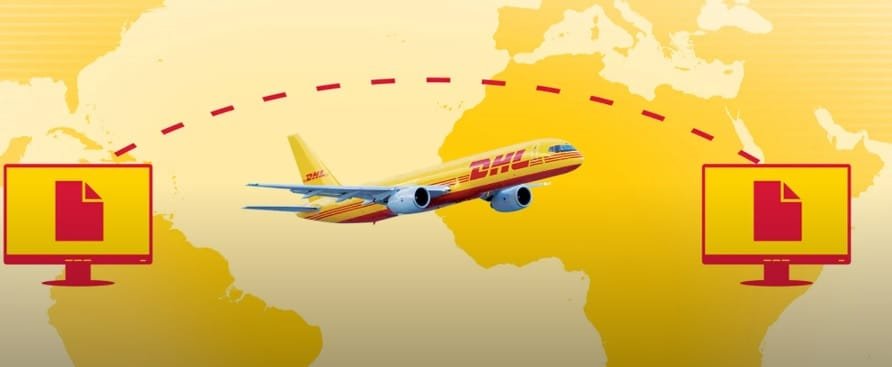“Learn about the future of customs! Discover the benefits of paperless customs procedures and how they streamline processes!
Paperless customs refers to the use of digital technologies to replace traditional paper-based documentation and processes in customs operations. Traditionally, customs procedures required the physical submission of import and export documents such as invoices, bills of lading and customs declarations. These documents were often manually processed, leading to long delays, human errors and increased costs. In contrast, paperless customs use electronic systems for the submission, processing and tracking of cargo shipments.
The central element of paperless customs is the Electronic Data Interchange (EDI), which allows the exchange of standard electronic documents between businesses, customs authorities and other stakeholders in the trade ecosystem. These systems enable the automation of various tasks, such as declaring goods, submitting invoices and obtaining necessary permits, without the need for physical paperwork. Additionally, technologies like blockchain, artificial intelligence (AI) and cloud computing are being integrated into the customs process, further enhancing security and efficiency.
Benefits of Paperless Customs
1. Improved Efficiency and Speed
One of the most significant advantages of paperless customs is the reduction in processing time. By eliminating the need for manual paperwork and physical inspections, customs authorities can process shipments faster, reducing the time goods spend waiting at borders. This accelerated clearance process enhances the overall efficiency of international trade, allowing goods to reach their destination more quickly.
With paperless systems, businesses can submit their declarations and other required documents electronically, reducing waiting times and administrative burdens. Furthermore, automated systems are more accurate and faster than human workers, decreasing the likelihood of delays caused by errors or misplaced documents.
2. Cost Reduction
The shift to paperless customs brings about significant cost savings for both businesses and customs authorities. For businesses, reducing the use of paper reduces printing, storage and mailing costs. It also minimizes the risk of costly errors, as automated systems are less prone to mistakes than manual processes. Customs authorities benefit from the reduced need for labor and physical infrastructure to process paper documents. These savings can then be reinvested into other areas, such as improving infrastructure and further digitizing services.
Moreover, fewer human interactions reduce the potential for corruption and fraud, contributing to a more transparent and cost-effective system.
3. Enhanced Security and Transparency
Digital systems are typically more secure than paper-based ones, with encryption and secure databases ensuring that only authorized parties can access sensitive information. This added layer of security helps reduce the risk of tampering with documents, identity theft and fraud. Additionally, the use of digital records provides an immutable audit trail, enhancing transparency and accountability in customs operations.
The integration of blockchain technology in customs procedures holds particular promise in enhancing the security and traceability of transactions. Blockchain’s decentralized ledger system ensures that all records are transparent, verifiable and resistant to tampering, making it an ideal tool for ensuring the integrity of cross-border trade.
4. Environmental Sustainability
Another important advantage of paperless customs is its contribution to environmental sustainability. The reduction in paper usage helps minimize deforestation, waste production, and energy consumption associated with the production and transportation of physical documents. By transitioning to digital processes, the customs industry can significantly lower its carbon footprint and contribute to global efforts to combat climate change.
Challenges of Implementing Paperless Customs
Despite the many benefits of paperless customs, the transition to a fully digital system is not without its challenges.
1. Technological Barriers
In many parts of the world, especially in developing countries, access to the necessary technology and infrastructure may be limited. For paperless customs to be implemented effectively, customs authorities and businesses must have access to high-speed internet, secure servers and sophisticated software systems. The cost of upgrading existing infrastructure can be prohibitive for some countries, hindering the widespread adoption of digital customs processes.
2. Legal and Regulatory Hurdles
The legal frameworks governing customs operations were traditionally designed with paper-based processes in mind. Updating these laws to accommodate digital systems can be a slow and complex process. Furthermore, countries may have different regulations regarding the electronic submission of documents, leading to inconsistencies and delays in the implementation of paperless customs systems.
International collaboration is essential to harmonize customs regulations and ensure that electronic documents are universally accepted. Efforts like the World Customs Organization’s (WCO) Data Model aim to create standardized digital procedures for international trade, but there is still progress to be made.
3. Resistance to Change
Change is often met with resistance, and the adoption of paperless customs is no exception. Customs officers, importers, exporters and other stakeholders who are accustomed to traditional methods may be reluctant to switch to new digital systems. Training and capacity-building programs are essential to overcome this resistance and ensure that all parties are equipped to handle electronic systems effectively.
The Future of Paperless Customs
As more countries implement paperless customs systems, the efficiency and effectiveness of global trade will continue to improve. Technological advancements in artificial intelligence, blockchain and machine learning will play a pivotal role in further enhancing customs operations. For instance, AI can be used to predict potential risks associated with shipments, allowing for smarter, more targeted inspections. Similarly, machine learning algorithms can analyze historical data to optimize customs processes, reducing delays and improving the accuracy of assessments.
The future of paperless customs also includes greater interoperability between different national systems, creating a more seamless experience for businesses involved in international trade. As trade barriers are lowered and digital processes become the norm, the potential for growth and innovation in global commerce will be immense.
Conclusion
Paperless customs represent a transformative shift in the way international trade and border control are conducted. By digitizing customs procedures, businesses and governments stand to benefit from faster processing times, reduced costs, improved security, and a more environmentally sustainable approach to cross-border trade. However, challenges such as technological infrastructure, legal adaptation and resistance to change must be addressed to fully realize the potential of paperless customs. As the global economy continues to evolve, the adoption of paperless customs will be a crucial step toward creating a more efficient, transparent and secure international trade system.




